Sustainable Management Decisions for Urban Historical Parks: A Case Study Based on Online Referential Values of Carol I Park in Bucharest, Romania
Abstract
:1. Introduction
- What information about the Carol I Park and its components is searched for by users of the Google platform?
- How can the cultural tourism potential of the Carol I Park be influenced by the results of this research?
- What is the popularity ranking for the objectives within the composition of the Carol I Park?
- What referential values can be calculated using the data of this study and how can they assist the managerial decision?
- How does the conducted research contribute to the development of a sustainable territorial marketing strategy?
2. Methodology
2.1. Research Area
2.2. Data Analysis
2.2.1. Establishing the Search Algorithm
2.2.2. Forming the Database of Terms and Phrases
- The relevance of the search drive (e.g., we eliminated the keyword phrases that lead to information about real estate in the vicinity of the Carol I Park or another park in Romania bearing the same name), which are all of no interest to the article purpose;
- The probability of identifying the actual, relevant online information, respectively the users’ searches in the Google search engine, by running the subjective/virtual keyword phrases in the analysis software we used;
- The actual date, time frame projection and actuality of the information acquired from the Internet with the analysis software;
- The validity of the objectives we studied in the Carol I Park and their functionalities, which we aimed to assess using this research method.
2.2.3. Processing the Database Consisting of Terms and Phrases
2.2.4. Running the Database in the GetKeywords and Google Ads Programs
2.2.5. Processing the Search Results
2.2.6. Data Validation
3. Results
3.1. Findings
3.2. Validation Results
- -
- A single database, built from semantic derivatives and phrases that define and expand the characteristics of the park and its components as well as events/actions carried out within the park, was created;
- -
- The established database was then run in both software programs GetKeywords and Google Ads, generating numerical results;
- -
- These results from running in both programs were processed complementary with the help of Excel in order to calculate the values consisting of the systematic summation of the values, broken down monthly and multi-yearly, with the aim of finally obtaining the total number of searches per objective;
- -
- Finally, the numerical data, generated by the processing in Excel of the values run in both programs, were automatically illustrated by Excel, graphically demonstrating a quasi-parallelism of the trends, showing a margin of tolerance of 15–14%.
4. Discussions
4.1. The Research Implication and Practical Application
- -
- Can an informed opinion be formed about the value and importance of this urban historical park under the conditions where there are exclusively external to the area (blogs, online press articles and social networks) opinion-forming data?
- -
- Can the image, the message to the public and the cultural offer of the managed objective be effectively promoted without dedicated information on the web?
- -
- Can a marketing and advertising policy be effective without evaluating the potential visitor levels and dynamics of interest expressed by the number of online searches?
- How many citizens know about the existence of the Carol I Park?
- How many citizens have information about Carol I Park and its component objectives?
- How many objectives of the Carol I Park are searched for/appreciated by the citizens?
- Which is the most/least searched objective within the Carol I Park composition?
- In which calendar period is information requested/not requested or less/more requested about Carol I Park and its objectives?
4.2. Limitations
4.3. Direction for Future Research
5. Conclusions
Author Contributions
Funding
Institutional Review Board Statement
Informed Consent Statement
Data Availability Statement
Acknowledgments
Conflicts of Interest
References
- Abdel-Rahman, N.H. Alexandria’s cultural landscapes: Historical parks between originality and deterioration. WIT Trans. Built Environ. 2017, 170, 73–83. [Google Scholar]
- Guillén, M.A.; Ochoa, J. The Plaza del Rey in Cartagena, Spain, 1751–2014. A case of social and spatial destruction. Acta Hortic. 2017, 1189, 85–88. [Google Scholar] [CrossRef]
- Guillén, M.A.; Ochoa, J. Interventions and transformation in a historical landscaped public space: The Plaza de San Francisco in Cartagena, Spain. Acta Hortic. 2017, 1189, 65–69. [Google Scholar] [CrossRef]
- Kanellou, E.; Papafotiou, M. Restoration of the historic gardens of the former royal estate of Tatoi. Acta Hortic. 2017, 1189, 171–176. [Google Scholar] [CrossRef]
- Marougka, E.; Paraskevopoulou, A. The design of the surroundings of Rizarios Ecclesiastical School and a proposal for its regeneration. Acta Hortic. 2017, 1189, 77–80. [Google Scholar] [CrossRef]
- Gullino, P.; Devecchi, M.; Larcher, F. New sustainable approach for historical garden restoration: The case study of Ludwig Winter’s Gardens in Liguria Region. Acta Hortic. 2020, 1279, 9–14. [Google Scholar] [CrossRef]
- Battisti, L.; Corsini, F.; Gusmerotti, N.M.; Larcher, F. Management and Perception of Metropolitan Natura 2000 Sites: A Case Study of La Mandria Park (Turin, Italy). Sustainability 2019, 11, 6169. [Google Scholar] [CrossRef]
- Paraskevopoulou, A.; Klados, A.; Chrysovalantis, M. Historical Public Parks: Investigating Contemporary Visitor Needs. Sustainability 2020, 12, 9976. [Google Scholar] [CrossRef]
- Woudstra, J. Introduction: The regeneration of public parks. In The Regeneration of Public Parks; Woudstra, J., Fieldhouse, K., Eds.; E & FN Spon: London, UK, 2000; pp. 1–8. [Google Scholar]
- Hosagrahar, J.; Soule, J.; Fusco Girard Potts, A.; Cultural Heritage, the UN Sustainable Development Goals, and the New Urban Agenda. ICOMOS, 15 February 2016. Available online: http://www.usicomos.org/wpcontent/uploads/2016/05/Final-Concept-Note.pdf (accessed on 12 June 2022).
- Chiesura, A. The Role of Urban Parks for the Sustainable City. Landsc. Urban Plan. 2004, 68, 129–138. [Google Scholar] [CrossRef]
- Chang, C.Y.; Chen, P.K. Human Responses to Window Views and Indoor Plants in the Workplace. Hortic. Sci. 2005, 40, 1354–1359. [Google Scholar] [CrossRef]
- Coley, R.; Kuo, F.; Sullivan, W. Where does Community Grow? The Social Context Created by Nature in Urban Public Housing. Environ. Behav. 1997, 29, 468–494. [Google Scholar] [CrossRef]
- Hartig, T.; Mang, M.; Evans, G. Restorative Effects of Natural Environments Experiences. Environ. Behav. 1991, 23, 3–26. [Google Scholar] [CrossRef]
- Kaplan, R. The Analysis of Perception via Preference: A Strategy for Studying How the Environment is Experienced. Landsc. Urban Plan. 1983, 12, 161–176. [Google Scholar] [CrossRef]
- Kuo, F.E.; Bacaioca, M.; Sullivan, W.C. Transforming Inner City Landscapes: Trees, Sense of Safety, and Preferences. Environ. Behav. 1998, 1, 28–59. [Google Scholar] [CrossRef]
- Peters, K. Being together in Urban Parks: Connecting Public Space. Leis. Sci. 2010, 32, 418–433. [Google Scholar] [CrossRef]
- Rosenberger, R.S.; Bergerson, T.R.; Kline, J.D. Macro-Linkages between Health and Outdoor Recreation: The Role of Parks and Recreation Providers. J. Parks Recreat. Adm. 2009, 27, 8–20. [Google Scholar]
- Schroeder, H.W. Preferences and Meaning of Arboretum Landscapes: Combining Quantitative and Qualitative Data. J. Environ. Psychol. 1991, 11, 231–248. [Google Scholar] [CrossRef]
- Ulrich, R.S. Natural versus Urban Sciences: Some Psycho-Sociological Effects. Environ. Behav. 1981, 13, 523–556. [Google Scholar] [CrossRef]
- Ajzen, I. Nature and Operation of Attitudes. Annu. Rev. Psychol. 2001, 52, 27–58. [Google Scholar] [CrossRef]
- Larson, K. Social Acceptability of Water Resource Management: A Conceptual Approach and Empirical Findings from Portland, Oregon. J. Am. Water Resour. Assoc. 2009, 45, 879–893. [Google Scholar] [CrossRef]
- Owens, S.; Driffill, L. How to Change Attitudes and Behaviors in the Context of Energy. Energy Policy 2008, 38, 4412–4418. [Google Scholar] [CrossRef]
- Vaske, J.J.; Donnelly, M.P. A Value-Attitude- Behavior Model Predicting Wildland Preservation Voting Intensions. Soc. Nat. Resour. 1999, 12, 523–537. [Google Scholar]
- Verschuure-Stuip, G. Long Live the Genius Loci–Research to the Embedding of Urban and Landscape Architectural Designs to the Context for New Transformations. In Proceedings of the 4th International Conference of the International Forum on Urbanism (IFoU), Amsterdam/Delft, 2009: The New Urban Question–Urbanism beyond Neo-Liberalism, Delft, The Netherlands, 26–28 November 2009. [Google Scholar]
- Wuisang, C.E.V. Defining Genius Loci and Qualifying Cultural Landscape. Doctoral Thesis, The University of Adelaide–Faculty of Professions, School of Architecture and Build Environment, Adelaide, Australia, 2014. [Google Scholar]
- Harney, M. ‘Genius Loci’ Restored: The Challenge of Adaptive Reuse in Conservation Adaptation. Keeping Alive the Spirit of the Place. Adaptive Reuse of Heritage with Symbolic Value; IEAAE Transactions on Architectural Education; European Association for Architectural Education: Hasselt, Belgium, 2017; pp. 151–162. [Google Scholar]
- Pittalunga, D. Capturing the Spirit of the Place. A Special Conservation for Intangible Heritage in Conservation Adaptation. Keeping Alive the Spirit of the Place. Adaptive Reuse of Heritage with Symbolic Value; EAAE Transactions on Architectural Education; European Association for Architectural Education: Hasselt, Belgium, 2017; pp. 247–253. [Google Scholar]
- Sorbo, E. The Project as Re-Signification between ‘Lieux de Mémoire’ and ‘Lieux d’Histoire’ in Conservation Adaptation. Keeping Alive the Spirit of the Place. Adaptive Reuse of Heritage with Symbolic Value; EAAE Transactions on Architectural Education; European Association for Architectural Education: Hasselt, Belgium, 2017; pp. 283–292. [Google Scholar]
- Stepanchuk, A.; Gafurova, S.; Latypova, M. «Genius Loci» as a resource for the development of historical areas of the city. IOP Conf. Ser. Mater. Sci. Eng. 2020, 890, 012013. [Google Scholar] [CrossRef]
- Vecco, M. Genius Loci as a Meta-Concept. J. Cult. Herit. 2020, 41, 225–231. [Google Scholar] [CrossRef]
- Rudnicka-Bogusz, M. The Genius loci Issue in the Revalorization of Post-Military Complexes: Selected Case Studies in Legnica (Poland). Buildings 2022, 12, 232. [Google Scholar] [CrossRef]
- Heft, H. Affordances in the landscape. In Proceedings of the Innovative Approaches to Research Excellence in Landscape and Health, Edinburgh, UK, 19–21 September 2007; pp. 18–23. [Google Scholar]
- Moilanen, T.; Rainisto, S. How to brand Nations, Cities and Destinations. A Planning Book for Place Branding; Palgrave Macmillan: London, UK; New York, NY, USA, 2009; pp. 17–19. [Google Scholar]
- Rainisto, S.K. Success Factors of Place Marketing: A Study of Place Marketing Practices in Northern Europe and the United States. Doctoral Dissertation, Helsinki University of Technology, Espoo, Finland, 2003. [Google Scholar]
- Chatzidakis, A.; McEachern, M.; Warnaby, G. Consumption In and Of Space and Place: Introduction to the Special Issue. Mark. Theory 2018, 18, 149–153. [Google Scholar] [CrossRef]
- Soja, E.W. Third Space: Journeys to Los Angeles and Other Real-and-Imagined Places; Blackwell: Malden, MA, USA, 1996. [Google Scholar]
- Montgomery, J. Making a city: Urbanity, Vitality and Urban Design. J. Urban Des. 1998, 3, 93–116. [Google Scholar] [CrossRef]
- Smaldone, D.; Harris, C.; Sanyal, N. An exploration of place as a process: The case of Jackson Hole, WY. J. Environ. Psychol. 2005, 25, 397–414. [Google Scholar] [CrossRef]
- Ujang, N.; Zakariya, K. The Notion of Place, Place Meaning and Identity in Urban Regeneration. Soc. Behav. Sci. 2015, 170, 709–717. [Google Scholar] [CrossRef]
- Steadman, R.C. Is it just a social construction? The contribution of the physical environment to sense of place? Soc. Nat. Resour. Int. J. 2003, 16, 671–685. [Google Scholar] [CrossRef]
- Savage, M. The politics of elective belonging. Hous. Theory Soc. 2010, 27, 115–161. [Google Scholar] [CrossRef]
- Stephenson, J. People and place. Plan. Theory Pract. 2010, 11, 9–21. [Google Scholar] [CrossRef]
- Anholt, S. Competitive Identity: The New Brand Management for Nations, Cities and Regions; Palgrave Macmillan: New York, NY, USA, 2007; p. 26. [Google Scholar]
- Vazhenina, I.S. Image and reputation of the territory. Reg. Econ. Theory Pract. 2010, 23, 1–12. [Google Scholar]
- Vazhenina, I.S. On the essence of the territory brand. Econ. Reg. 2011, 3, 18–23. [Google Scholar] [CrossRef]
- Cohen, D.A.; Marsh, T.; Williamson, S.; Derose, K.P.; Martinez, H.; Setodji, C.; McKenzie, T.L. Parks and physical activity: Why are some parks used more than others? Prev. Med. 2010, 50 (Suppl. S1), S9–S12. [Google Scholar] [CrossRef]
- Giles-Corti, B.; Broomhall, M.H.; Knuiman, M.; Collins, C.; Douglas, K.; Ng, K.; Lange, A.; Donovan, R.J. Increasing walking: How important is distance to, attractiveness, and size of public open space? Am. J. Prev. Med. 2005, 28 (Suppl. S2), 169–176. [Google Scholar] [CrossRef]
- Wright Wendel, H.E.; Zarger, R.K.; Mihelcic, J.R. Accessibility and usability: Green space preferences, perceptions, and barriers in a rapidly urbanizing city in Latin America. Landsc. Urban Plan. 2012, 107, 272–282. [Google Scholar] [CrossRef]
- Zhang, S.; Zhou, W. Recreational visits to urban parks and factors affecting park visits: Evidence from geotagged social media data. Landsc. Urban Plan. 2019, 180, 27–35. [Google Scholar] [CrossRef]
- Grow, H.M.; Saelens, B.E.; Kerr, J.; Durant, N.H.; Norman, G.J.; Sallis, J.F. Where are youth active? Roles of proximity, active transport, and built environment. Med. Sci. Sports Exerc. 2008, 40, 2071–2079. [Google Scholar] [CrossRef]
- Mowen, A.; Orsega-Smith, E.; Payne, L.; Ainsworth, B.; Godbey, G. The role of park proximity and social support in shaping park visitation, physical activity, and perceived health among older adults. J. Phys. Act. Health 2007, 4, 167–179. [Google Scholar] [CrossRef]
- Zhang, H.; Chen, B.; Sun, Z.; Bao, Z. Landscape perception and recreation needs in urban green space in Fuyang, Hangzhou, China. Urban For. Urban Green. 2013, 12, 44–52. [Google Scholar] [CrossRef]
- Zhang, W.; Yang, J.; Ma, L.; Huang, C. Factors affecting the use of urban green spaces for physical activities: Views of young urban residents in Beijing. Urban For. Urban Green. 2015, 14, 851–857. [Google Scholar] [CrossRef]
- Jansson, M.; Fors, H.; Lindgren, T.; Wiström, B. Perceived personal safety in relation to urban woodland vegetation—A review. Urban For. Urban Green. 2013, 12, 127–133. [Google Scholar] [CrossRef]
- Wang, D.; Brown, G.; Liu, Y. The physical and non-physical factors that influence perceived access to urban parks. Landsc. Urban Plan. 2015, 133, 53–66. [Google Scholar] [CrossRef]
- Sugiyama, T.; Ward Thompson, C. Associations between characteristics of neighborhood open space and older people’s walking. Urban For. Urban Green. 2008, 7, 41–51. [Google Scholar] [CrossRef]
- Giurescu, C.C. Istoria Bucureștilor Din Cele Mai Vechi Timpuri Până în Zilele Noastre; Enciclopedică: Bucharest, Romania, 1966; pp. 173, 323, 397. [Google Scholar]
- Potra, G. Din Bucureștii de Ieri; Științifică și Enciclopedică: Bucharest, Romania, 1990; pp. 338–342. [Google Scholar]
- Parusi, G. De la Câmpul Filaretului la Parcul Carol I. Bibl. Bucureștilor 2004, 11, 9–93. [Google Scholar]
- Damé, F. Bucureștiul în 1906; Paralela 45: Bucharest, Romania, 2007; pp. 609–611. [Google Scholar]
- Majuru, A. De la ” Grădina Filaret” la ”Parcul Regele Carol I”. Muzeul Munic. București 2017, 1–5. [Google Scholar]
- Clark, P. The European City and Green Space: London, Stockholm, Helsinki, and St. Petersburg 1850–2000; Ashgate: Aldershot, UK, 2006. [Google Scholar]
- Schenker, H.M. Melodramatic Landscapes: Urban Parks in the Nineteenth Century; University of Virginia Press: Charlottesville/London, UK, 2009. [Google Scholar]
- Butenschön, S.; Sāumel, I. Between cultural and ecological processes: Historical plant use in communal parks in Berlin, Germany. J. Landsc. Archit. 2011, 6, 54–67. [Google Scholar] [CrossRef]
- României, E. Enciclopedia României–1939; Imprimeria Naţională: București, Romania, 1939; Volume IV, pp. 293–296, 304. [Google Scholar]
- Chelcea, L. Bucureștiul Postindustrial: Memorie, Dezindustrializare și Regenerare Urbană; Polirom: Iași, Romania, 2008; p. 106. [Google Scholar]
- Edwards, S.L.; Bruce, C.S. Reflective Internet searching: An action research model. Learn. Organ. 2002, 9, 180–188. [Google Scholar] [CrossRef]
- Kurt, A.A.; Emiroglu, B.G. Analysis of Students’ Online Information Searching Strategies, Exposure to Internet Information Pollution and Cognitive Absorption Levels Based on Various Variables. Malays. Online J. Educ. Technol. 2017, 6, 18–29. [Google Scholar]
- Neti, S. Social media and its role in marketing. Int. J. Enterp. Comput. Bus. Syst. 2011, 1, 1–15. [Google Scholar]
- Mangold, W.G.; Faulds, D.J. Social Media: The New Hybrid Element of the Promotion Mix. Bus. Horiz. 2009, 52, 357–365. [Google Scholar] [CrossRef]
- McCay-Peet, L.; Quan-Haase, A. What is social media and what questions can social media research help us answer. In The SAGE Handbook of Social Media Research Methods; SAGE: Newcastle upon Tyne, UK, 2017; pp. 13–26. [Google Scholar]
- Aspinall, P.A.; Ward-Thomson, C.; Alves, S.; Alves, T.; Sugiyama, T.; Brice, R.; Vickers, A. Prioritizing factors influencing visits to greenspace: Conjoint analysis. In Proceedings of the Innovative Approaches to Research Excellence in Landscape and Health, Edinburgh, UK, 19–21 September 2007; pp. 35–39. [Google Scholar]
- Cojocea, A. The Effect of Social Media on the Decision-Making Process; Paper Within Digital Marketing and Social Media; Jönköping Univrsity—School of Engineering: Jönköping, Sweden, 2019. [Google Scholar]
- Nielsen, J.S. Use of the Internet for willingness-to-pay surveys: A comparison of face-to-face and web-based interviews. Resour. Energy Econ. 2011, 1, 119–129. [Google Scholar] [CrossRef]
- Ruppert, E.; Law, J.; Savage, M. Reassembling social science methods: The challenge of digital devices. Theory Cult. Soc. 2013, 30, 22–46. [Google Scholar] [CrossRef]
- Gutterman, B. (Ed.) Internet as a catalyst for change: Access, development, freedoms, and innovation. In Proceedings of the Sixth Meeting of the Internet Governance Forum, Nairobi, Kenya, 27–30 September 2011. Available online: https://www.intgovforum.org/cms/documents/publications/176-internet-as-a-catalyst-for-change-access-development-freedoms-and-innovations/file (accessed on 30 December 2020).
- Javed, L. Online Marketing through consumers: A Study of the Effectiveness of various Tools and Techniques across industries. Br. J. Mark. Stud. 2013, 1, 11–19. [Google Scholar]
- Xia, J.; Arrowsmiths, C.A.; Gimblett, R.; Skov-Petersen, H. Techniques for counting and tracking the spatial and temporal movement of visitors. In Monitoring, Simulation, and Management of Visitor Landscapes; The University of Arizona Press: Tucson, AZ, USA, 2008; pp. 85–105. [Google Scholar]
- Hornbach, K.E.; Eagles, P.F.J. Guidelines for Public Use Measurement and Reporting at Parks and Protected Areas; IUCN: Gland, Switzerland; Cambridge, UK, 1999. [Google Scholar]
- Cessford, G.; Cockburn, S.; Douglas, M. Developing new visitor counters and their application for management. In Proceedings of the Monitoring and Management of Visitor Flows in Recreational and Protected Areas, Vienna, Austria, 30 January–2 February 2002. [Google Scholar]
- Kajala, L.; Almik, A.; Dahl, R.; Dikšaitė, L.; Erkkonen, J.; Fredman, P.; Jensen, F.; Søndergaard, K.; Sievānen, T.; Skov-Petersen, H.; et al. Visitor Monitoring in Nature Areas—A Manual Based on Experiences from the Nordic and Baltic Countries; Nordic Council of Ministers; Naturvårdsverket and Metsähallitus: Stockholm, Sweden, 2007. [Google Scholar]
- Skov-Petersen, H.; Meilby, H.; Jensen, F.S. Applying data from Automatic Visitor Counters to Agent-Based Models. In Monitoring, Simulation, and Management of Visitor Landscapes; The University of Arizona Press: Tucson, AZ, USA, 2008; pp. 123–142. [Google Scholar]
- Watson, A.E.; Cole, D.N.; Turner, D.L.; Reynolds, P.S. Wilderness Recreation Use Estimation: A Handbook of Methods and Systems; General Technical Report RMRS-GTR-56; United States Department of Agriculture, Forest Service: Washington, DC, USA, 2000. [Google Scholar]
- Muhar, A.; Arnberger, A.; Brandenburg, C.H. Methods for Visitor Monitoring in Recreational and Protected Areas: An Overview. In Proceedings of the Monitoring and Management of Visitor Flows in Recreational and Protected Areas, Vienna, Austria, 30 January–2 February 2002. [Google Scholar]
- Fredman, P. Modeling visitor expenditures at Fulefjället National Park, Sweden, Exploring the nature of management. In Proceedings of the Third International Conference on Monitoring and Management of Visitor Flows in Recreational and Protected Areas, Rapperswil, Switzerland, 13–17 September 2006. [Google Scholar]
- Gimblett, R.; Itami, R.; Cable, S. Recreation Visitation in Misty Fjords National Monument in the Tongass National Forest. Computer Simulation Modelling of Recreation Use: Current Status, Case Studies and Futures Directions; General Technical Report; USDA/FS, Rocky Mountain Research Station: Fort Collins, CO, USA, 2005. [Google Scholar]
- Weitowitz, D.; Chris-Panter, C.; Hoskin, R.; Liley, D. Parking provision at nature conservation sites and its implications for visitor use. Landsc. Urban Plan. 2019, 190, 103597. [Google Scholar] [CrossRef]
- Gimblett, R.; Skov-Petersen, H. (Eds.) Monitoring, Simulation, and Management of Visitor Landscapes; University of Arizona Press: Tucson, AZ, USA, 2008; p. 1. [Google Scholar]
- Manning, R.E. Parks and Carrying Capacity. Commons without Tragedy; Island Press: Washington, DC, USA, 2007. [Google Scholar]
- Petrunoff, N.A.; Yi, N.X.; Dickens, B.; Sia, A.; Koo, J.; Alex, R.; Cook, A.R.; Lin, W.H.; Lu, Y.; Hsing, A.W.; et al. Associations of park access, park use and physical activity in parks with wellbeing in an Asian urban environment: A cross-sectional study. Int. J. Behav. Nutr. Phys. Act. 2021, 18, 87. [Google Scholar] [CrossRef]
- Aspinall, P.A.; Casey, S.; Lanthier, C.; Le, L. Parks in South End Guelph; Final Project Report for Geography 2260: Applied Human Geography, 2017, Winter; University of Guelph: Guelph, ON, Canada, 2017. [Google Scholar]
- Lee, Y.-C.; Kim, K.-H. Attitudes of Citizens towards Urban Parks and Green Spaces for Urban Sustainability: The Case of Gyeongsan City, Republic of Korea. Sustainability 2015, 7, 8240–8254. [Google Scholar] [CrossRef]
- Rouhi, M.; Monfared, M.R.; Forsat, M. Measuring Public Satisfaction on Urban Parks (A Case Study: Sari City). J. Hist. Cult. Art Res. 2016, 5, 457–473. [Google Scholar] [CrossRef]
- Tucker, P.; Gilliland, J.; Irwin, J.D. Splashpads, swings, and shade: Parents’ preferences for neighborhood parks. Can. J. Public Heath/Rev. Can. Santé Publique 2007, 98, 198–202. [Google Scholar] [CrossRef]
- Flowers, E.P.; Timperio, A.; Hesketh, K.D.; Veitch, J. Examining the Features of Parks That Children Visit During Three Stages of Childhood. Int. J. Environ. Res. Public Health 2019, 16, 1658. [Google Scholar] [CrossRef]
- Alves, S.; Aspinall, P.A.; Ward-Thomson, C.; Sugiyama, T.; Brice, R.; Vickers, A. Preferences of older people for environmental attributes of local parks: The use of choice-based conjoint analysis. Facilities 2008, 26, 433–453. [Google Scholar] [CrossRef]
- Aspinall, P.A.; Ward-Thompson, C.; Alves, S.; Sugiyama, T.; Brice, R.; Vickers, A. Preference and Relative Importance for Environmental Attributes of Neighborhood Open Space in Older People. Environ. Plan. B Plan. Des. 2010, 37, 1022–1039. [Google Scholar] [CrossRef]
- Costigan, S.A.; Veitch, J.; Crawford, D.; Carver, A.; Timperio, A. A Cross-Sectional Investigation of the Importance of Park Features for Promoting Regular Physical Activity in Parks. Int. J. Environ. Res. Public Health 2017, 14, 1335. [Google Scholar] [CrossRef]
- Roberts, H.; Kellar, I.; Conner, M.; Gidlow, C.; Kelly, B.; Nieuvenhuisjen, M.; McEachan, R. Associations between park features, park satisfaction and park use in a multi-ethnic deprived urban area. Urban For. Urban Green. 2019, 46, 126485. [Google Scholar] [CrossRef]
- Peters, K.; Elands, B.; Buijs, A. Social interactions in urban parks: Stimulating social cohesion? Urban For. Urban Green. 2010, 9, 93–100. [Google Scholar] [CrossRef]
- Jennings, V.; Bamkole, O. The Relationship between Social Cohesion and Urban Green Space: An Avenue for Health Promotion. Int. J. Environ. Res. Public Health 2018, 16, 452. [Google Scholar] [CrossRef]
- Edwards, N.; Hooper, P.; Knuiman, M.; Foster, S.; Giles-Corti, B. Associations between park features and adolescent park use for physical activity. Int. J. Behav. Nutr. Phys. Act. 2015, 12, 21. [Google Scholar] [CrossRef]
- Talal, M.L.; Santelmann, M.V.; Tilt, J.H. Urban Park visitor preferences for vegetation—An on-site qualitative research study. Plants People Planet 2021, 3, 375–388. [Google Scholar] [CrossRef]
- Doğrusoy, İ.T.; Zengel, R. Analysis of perceived safety in urban parks: A field study in Büyük Park and Hasanağa Park. J. Fac. Archit. 2017, 1, 63–84. [Google Scholar]
- Cohen, D.A.; Golinelli, D.; Williamson, S.; Sehgal, A. Effects of Park Improvements on Park Use and Physical Activity. Am. J. Prev. Med. 2009, 37, 475–480. [Google Scholar] [CrossRef] [PubMed]
- Krenichyn, K. ‘The only place to go and be in the city’: Women talk about exercise, being outdoors, and the meanings of a large urban park. Health Place 2006, 12, 631–643. [Google Scholar] [CrossRef] [PubMed]
- Veitch, J.; Flowers, E.; Ball, K.; Deforche, B.; Timperio, A. Exploring Children’s Views on Important Park Features: A Qualitative Study Using Walk-Along Interviews. Int. J. Environ. Res. Public Health 2020, 17, 4625. [Google Scholar] [CrossRef]
- Babey, S.H.; Hastert, T.A.; Yu, H.; Brown, R. Physical Activity Among Adolescents. When Do Parks Matter? Am. J. Prev. Med. 2008, 34, 345–348. [Google Scholar] [CrossRef] [PubMed]
- Mertens, L.; Van Cauwenberg, J.; Veitch, J.; Deforche, B.; Van Dyck, D. Differences in park characteristic preferences for visitation and physical activity among adolescents: A latent class analysis. PLoS ONE 2019, 14, e0212920. [Google Scholar] [CrossRef] [PubMed]
- Veitch, J.; Salmon, J.; Parker, K.; Bangay, S.; Deforche, B.; Timperio, A. Adolescents’ ratings of features of parks that encourage park visitation and physical activity. Int. J. Behav. Nutr. Phys. Act. 2016, 13, 73. [Google Scholar] [CrossRef] [PubMed]
- Van Hecke, L.; Gherkiere, A.; Van Cauwenberg, J.; Veitch, J.; Bourdeaudhuij, I.D.; Van Dyck, D.; Clarys, P.; Weghe, N.V. Park characteristics preferred for adolescent park visitation and physical activity: A choice-based conjoint analysis using manipulated photographs. Landsc. Urban Plan. 2018, 178, 144–155. [Google Scholar] [CrossRef]
- Van Dyck, D.; Hecke, L.V.; Gherkiere, A.; Cauwenberg, J.V.; Vetch, J.; Bourdeaudhui, I.D.; Clarys, P.; Weghe, N.V.; Deforche, B. Which Park Characteristics Influence the Invitingness for Park Visitation and Park-Based Physical Activity in Adolescents? A Choice-Based Conjoint Analysis Using Photographs; University of Bern: Bern, Switzerland, 2017. [Google Scholar]
- Rivera, E.; Timperio, A.; Loh, V.H.; Benedicte, D.; Veitch, J. Important Park features for encouraging park visitation, physical activity and social interaction among adolescents: A conjoint analysis. Health Place 2021, 70, 102617. [Google Scholar] [CrossRef]
- Hadavi, S.; Kaplan, R.; Hunter, M.C.R. Environmental affordances: A practical approach for design of nearby outdoor settings in urban residential areas. Landsc. Urban Plan. 2015, 134, 19–32. [Google Scholar] [CrossRef]
- Caumont, A. 12 Trends Shaping DIGITAL News. 2013. Available online: https://policycommons.net/artifacts/620959/12-trends-shaping-digital-news/1602185/ (accessed on 18 July 2022).
- Shearer, E.; Matsa, K. News Use Across Social Media Platforms. 2018. Available online: https://www.journalism.org/2018/09/10/news-use-across-social-media-platforms2018/1282018 (accessed on 18 July 2022).
- Burbach, L.; Halbach, P.; Ziefle, M.; Calero-Valvez, A. Influence of Personality, Network Structure, and Content on Sharing Messages Online. Front. Artif. Intell. 2020, 3, 45. [Google Scholar] [CrossRef]
- Peptenatu, D.; Merciu, C.; Merciu, G.; Draghici, C.; Cercleux, L. Specific features of environment risk management in emerging territorial structures. Carpathian J. Earth Environ. Sci. 2012, 7, 135–143. [Google Scholar]
- Draghici, C.C.; Andronache, I.; Ahammer, H.; Peptenatu, D.; Pintilii, R.D.; Ciobotaru, A.M.; Simion, A.G.; Dobrea, R.C.; Diaconu, D.C.; Visan, M.C.; et al. Spatial evolution of forest areas in the northern Carpathian Mountains of Romania. Acta Montan. Slovaca 2017, 22, 95–106. [Google Scholar]
- Petrisor, A.I.; Andronache, I.; Petrisor, L.E.; Ciobotaru, A.M.; Peptenatu, D. Assessing the fragmentation of the green infrastructure in Romanian cities using fractal models and numerical taxonomy. Procedia Environ. Sci. 2016, 32, 110–123. [Google Scholar] [CrossRef]
- Peptenatu, D.; Pintilii, R.D.; Draghici, C.; Stoian, D. Environmental pollution in functionally restructured urban areas: Case study—The city of Bucharest. Iran. J. Environ. Health Sci. Eng. 2010, 7, 87–96. [Google Scholar]
- Braghina, C.; Peptenatu, D.; Draghici, C.; Pintilii, R.D.; Schvab, A. Territorial management within the systems affected by mining. Case study the South-Western Development Region in Romania. Iran. J. Environ. Health Sci. Eng. 2011, 8, 315–324. [Google Scholar]
- Draghici, C.C.; Pintilii, R.D.; Peptenatu, D.; Comanescu, L.G.; Sirodoev, I. The Role of SPA Tourism in the Development of Local Economies from Romania, 2ND Global Conference on Business, Economics, Management and Tourism. Procedia Econ. Financ. 2015, 23, 1573–1577. [Google Scholar]
- Pintilii, R.D.; Peptenatu, D.; Draghici, C.; Saghin, I.; Stoian, D.-R. Structural Changes in The Entrepreneurial Profile of The Creative Industries in Romania, 2ND Global Conference on Business, Economics, Management and Tourism. Procedia Econ. Financ. 2015, 23, 1147–1151. [Google Scholar]
- Merciu, F.-C.; Cercleux, A.L.; Peptenatu, D. Rosia Montană, Romania: Industrial heritage in situ, between preservation, controversy and cultural recognition. Ind. Archaeol. Rev. 2015, 37, 5–19. [Google Scholar]
- Mowen, A.J. Estimating Visitor Occasions and Recreational Visits at an Urban Park District. In Proceedings of the Monitoring and Management of Visitor Flows in Recreational and Protected Areas, Vienna, Austria, 30 January–2 February 2002; pp. 436–438. [Google Scholar]
- McCormack, G.R.; Rock, M.; Toohey, A.M.; Hignell, D. Characteristics of Urban Parks Associated with Park Use and Physical Activity: A Review of Qualitative Research. Health Place 2010, 16, 712–726. [Google Scholar] [CrossRef]


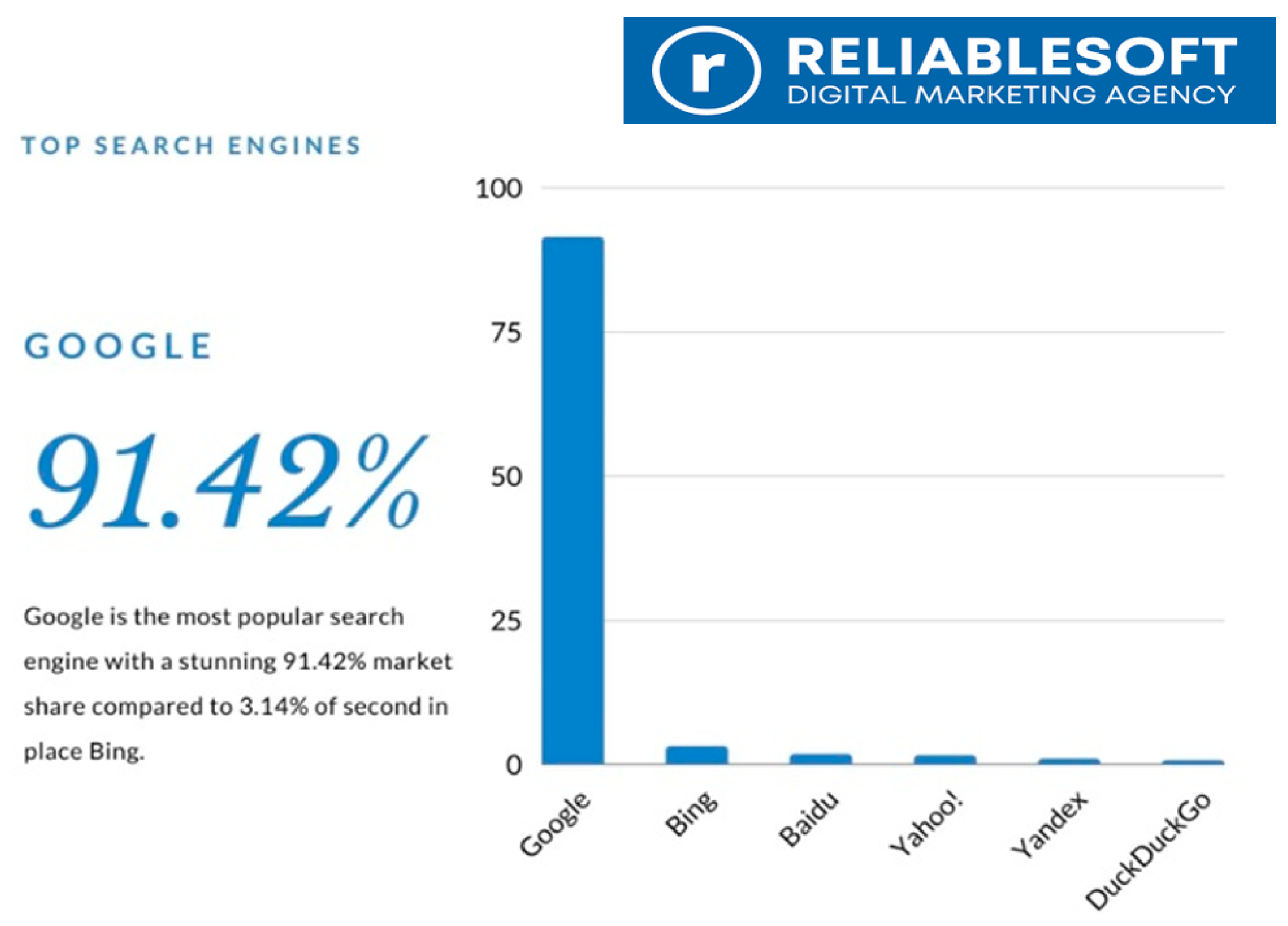
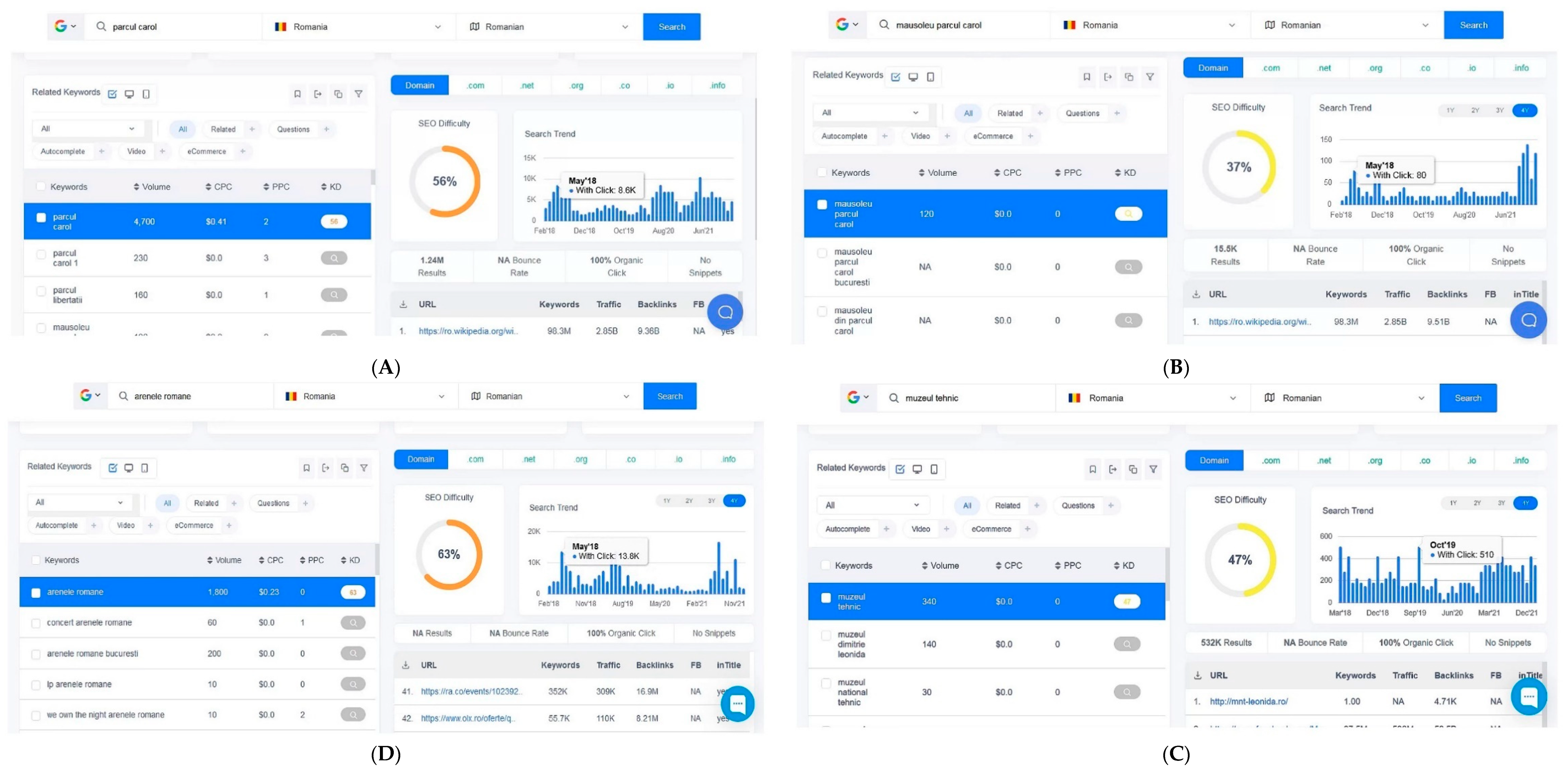
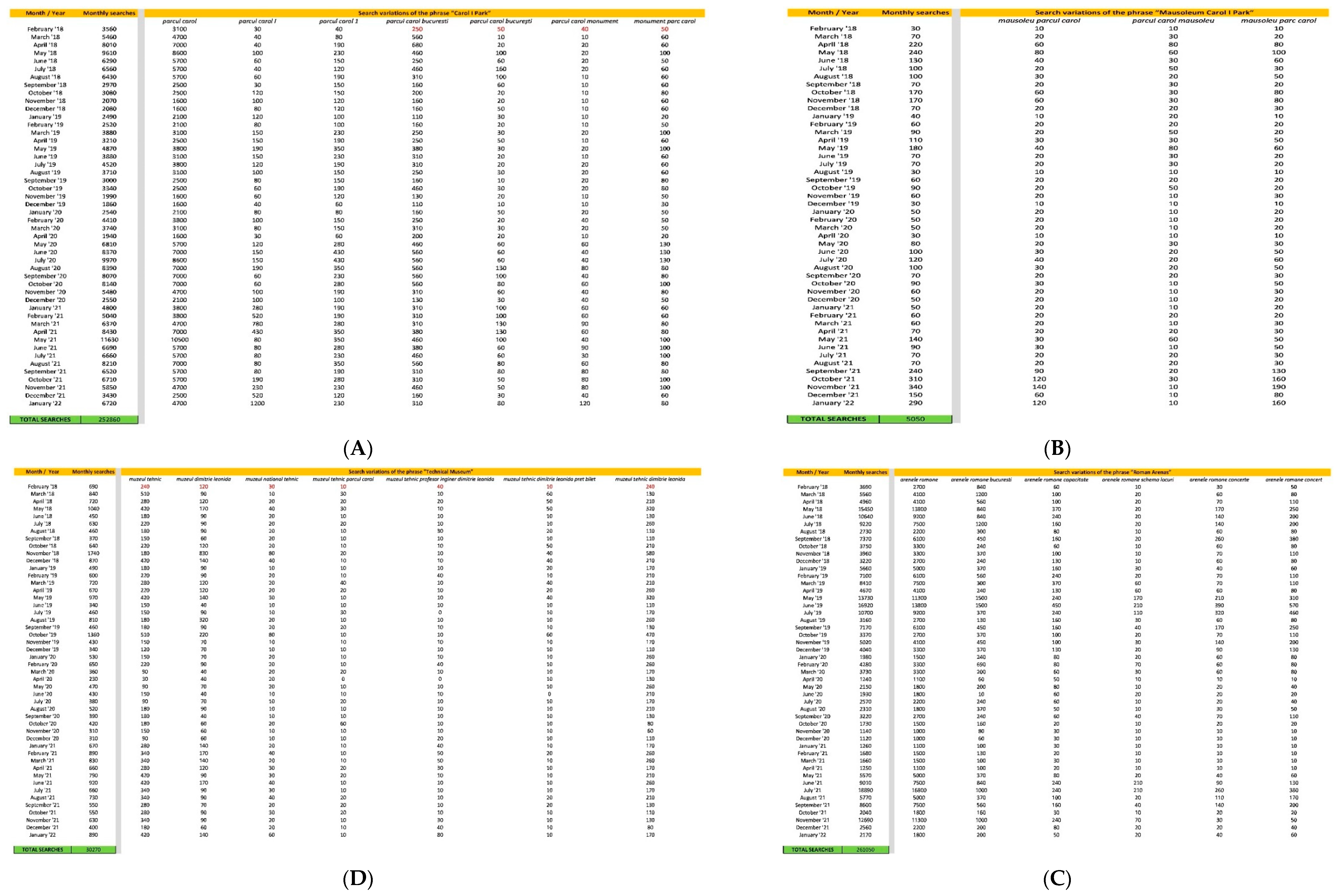


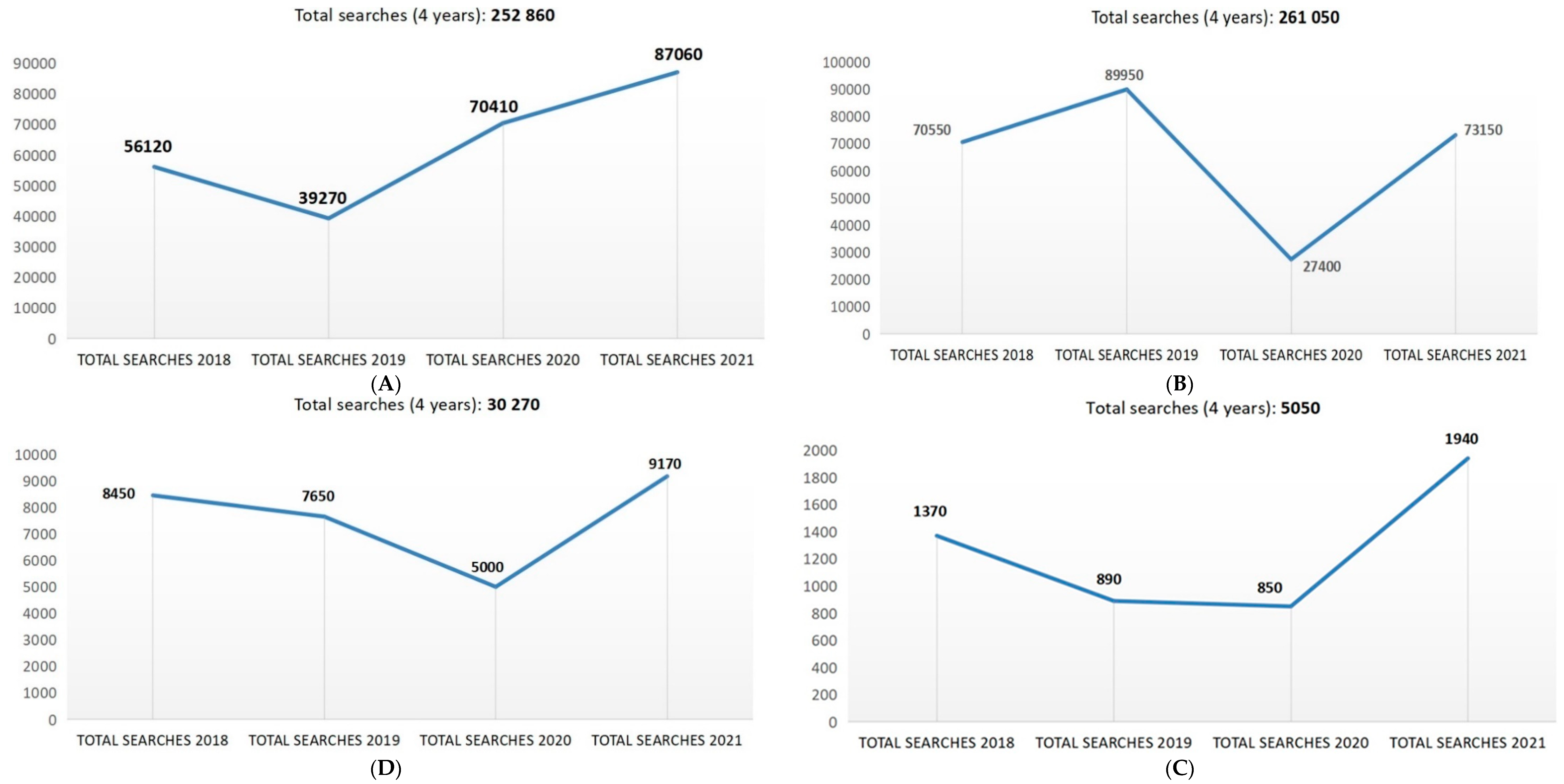
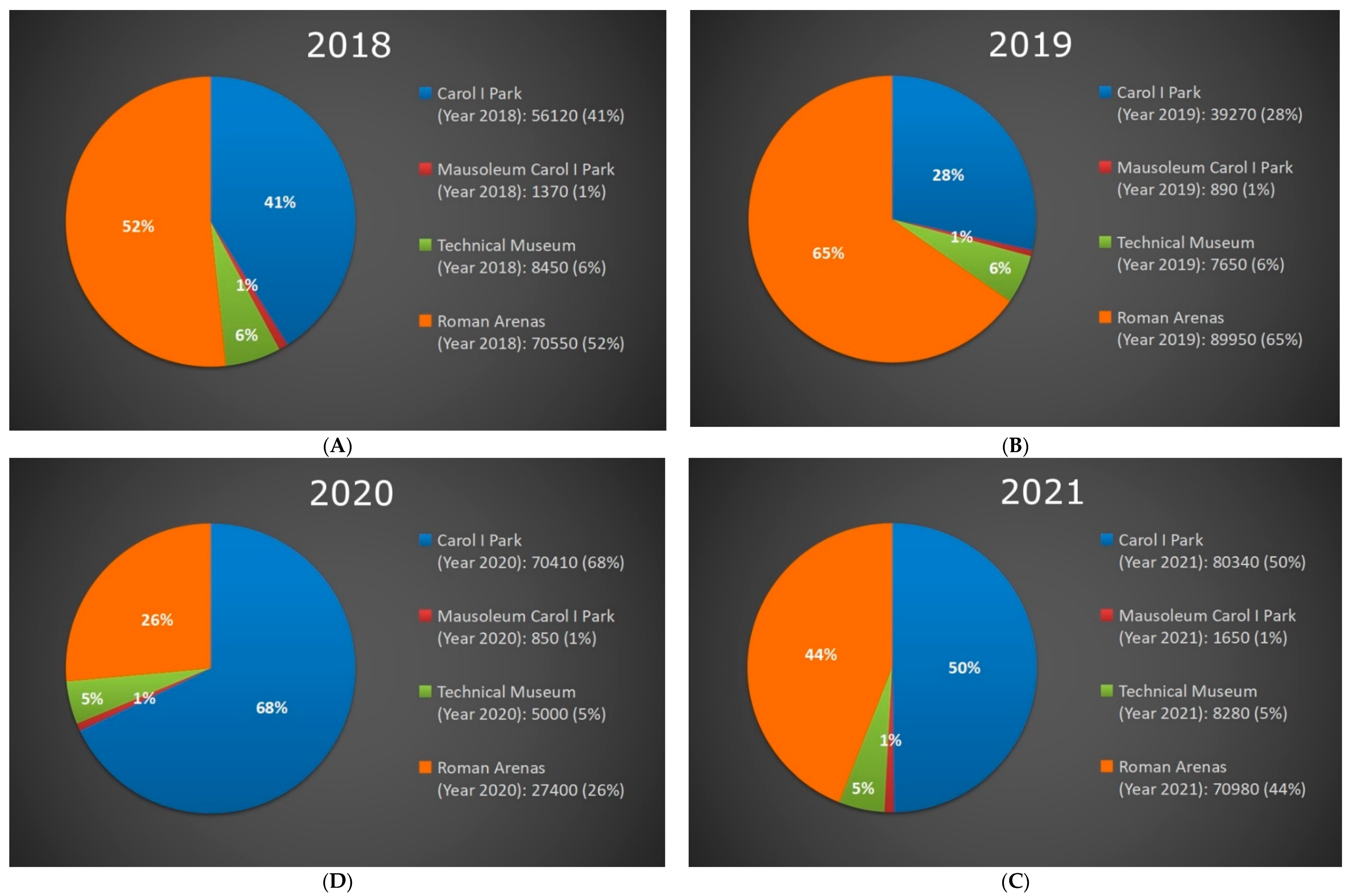
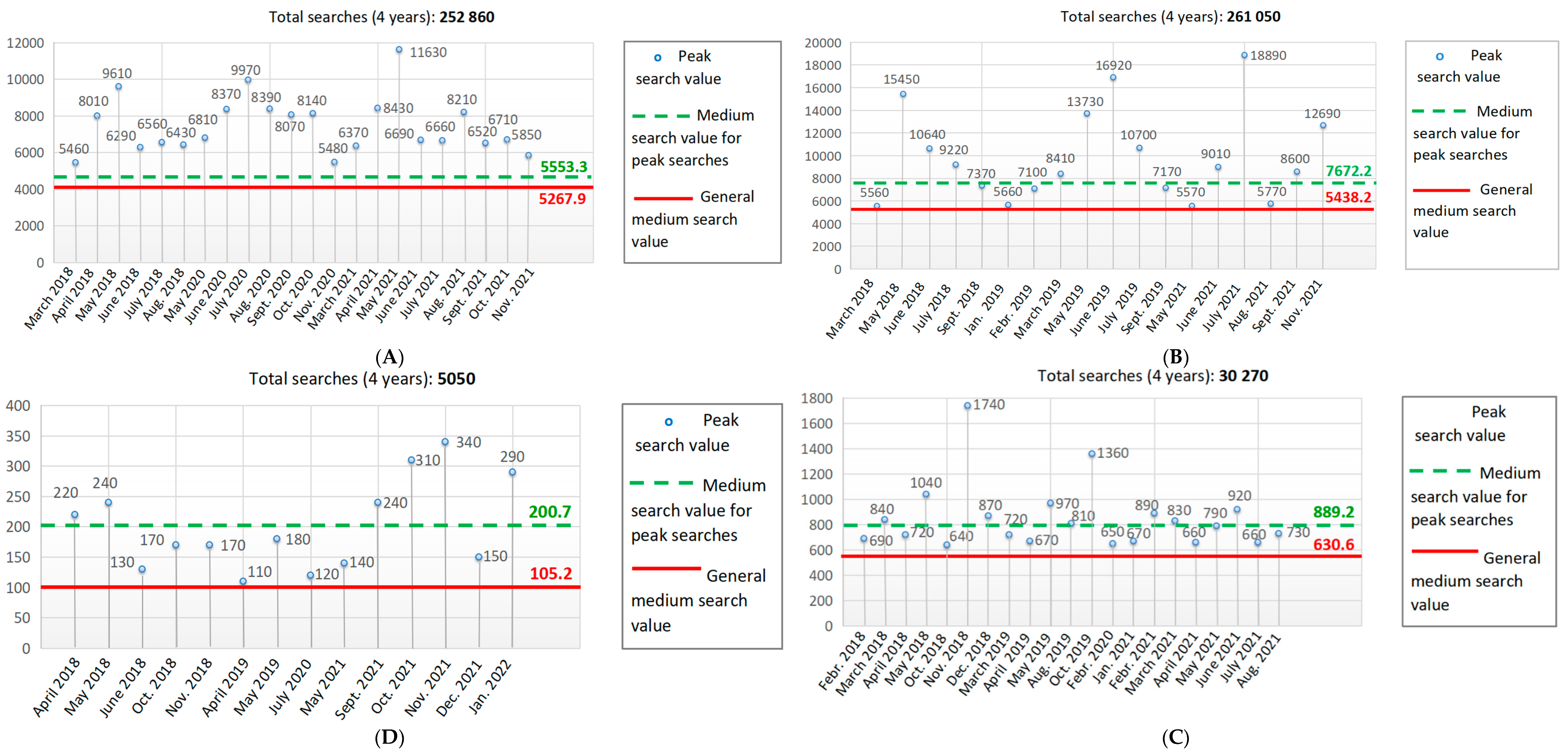
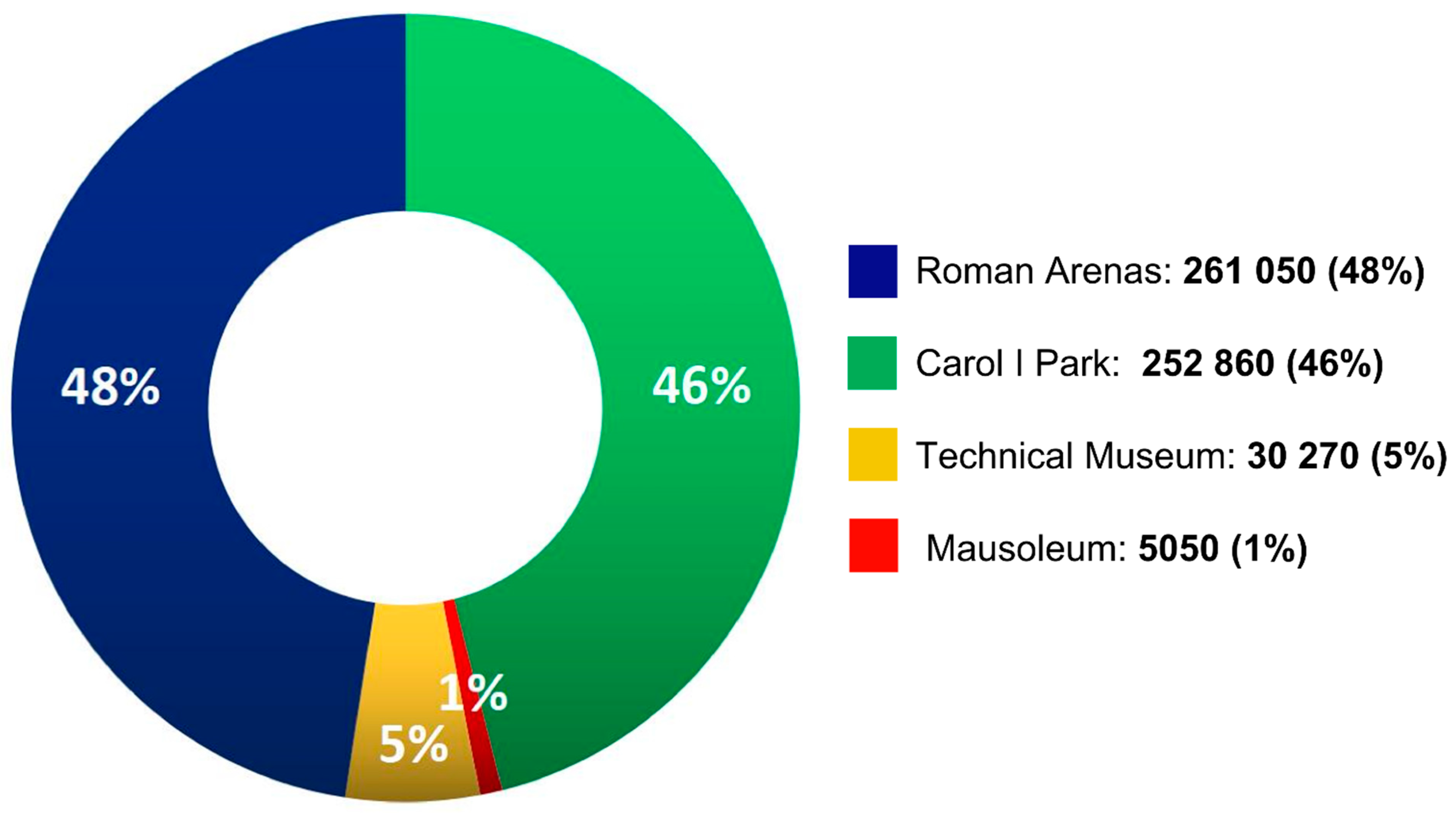
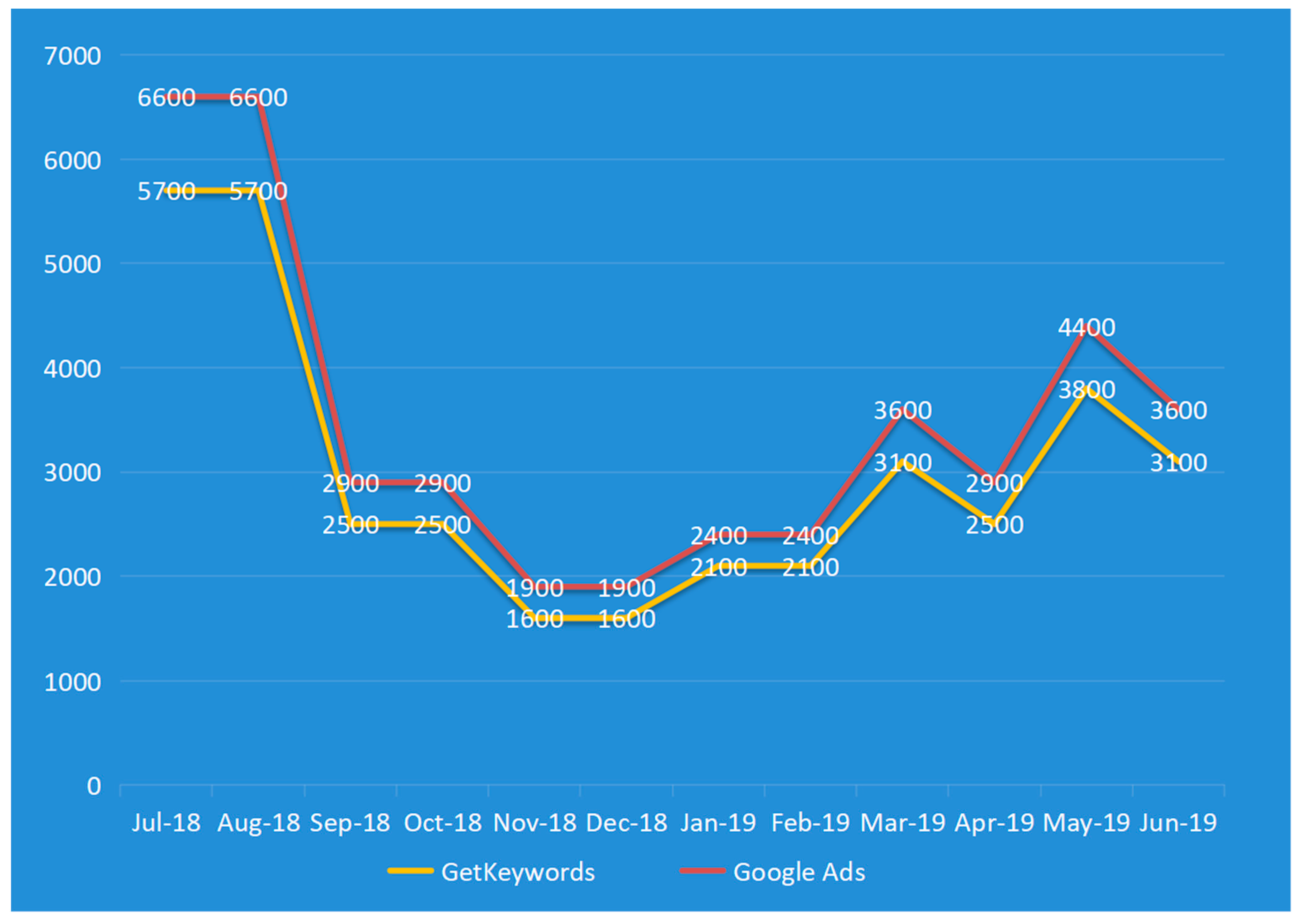
Disclaimer/Publisher’s Note: The statements, opinions and data contained in all publications are solely those of the individual author(s) and contributor(s) and not of MDPI and/or the editor(s). MDPI and/or the editor(s) disclaim responsibility for any injury to people or property resulting from any ideas, methods, instructions or products referred to in the content. |
© 2023 by the authors. Licensee MDPI, Basel, Switzerland. This article is an open access article distributed under the terms and conditions of the Creative Commons Attribution (CC BY) license (https://creativecommons.org/licenses/by/4.0/).
Share and Cite
Bazac, T.; Marin, S.; Olteanu, C.; Hotoi, A. Sustainable Management Decisions for Urban Historical Parks: A Case Study Based on Online Referential Values of Carol I Park in Bucharest, Romania. Sustainability 2023, 15, 14456. https://doi.org/10.3390/su151914456
Bazac T, Marin S, Olteanu C, Hotoi A. Sustainable Management Decisions for Urban Historical Parks: A Case Study Based on Online Referential Values of Carol I Park in Bucharest, Romania. Sustainability. 2023; 15(19):14456. https://doi.org/10.3390/su151914456
Chicago/Turabian StyleBazac, Titus, Sorin Marin, Cosmin Olteanu, and Anca Hotoi. 2023. "Sustainable Management Decisions for Urban Historical Parks: A Case Study Based on Online Referential Values of Carol I Park in Bucharest, Romania" Sustainability 15, no. 19: 14456. https://doi.org/10.3390/su151914456
APA StyleBazac, T., Marin, S., Olteanu, C., & Hotoi, A. (2023). Sustainable Management Decisions for Urban Historical Parks: A Case Study Based on Online Referential Values of Carol I Park in Bucharest, Romania. Sustainability, 15(19), 14456. https://doi.org/10.3390/su151914456





